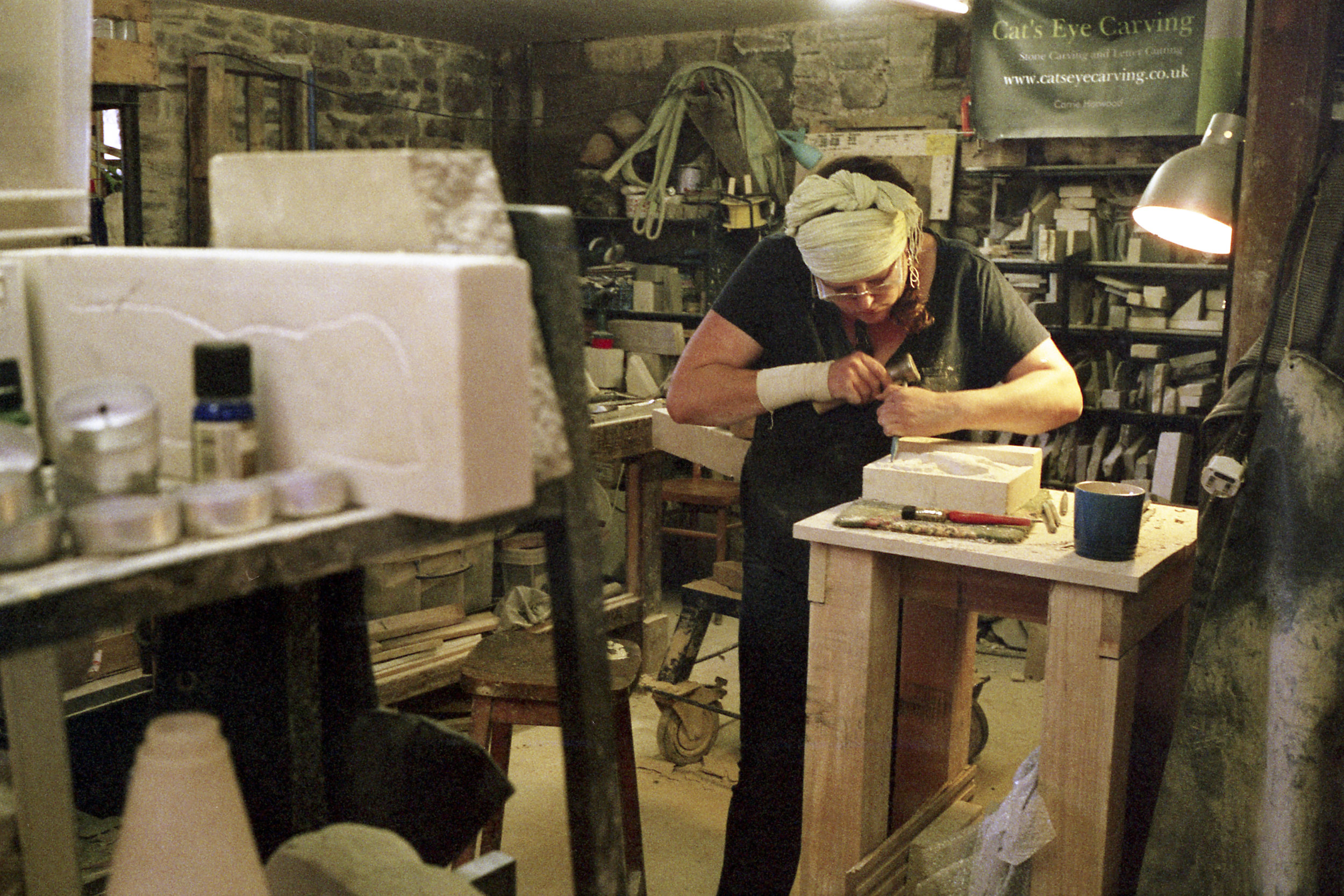














Your Custom Text Here
The shaping and manipulation of stone’s fundamentals are perhaps evidence of our oldest craft. During the stone age (8700-2000 BCE) the use of stone was fundamentals to everyday life, rudimentary tools and hunting weapons could only be made from stone and wood, the start of manmade structure involved stone hand tools, the birth of agriculture shaped with the stone-axe. At this time developments towards the bronze age would bring about the tools needed for many of the other industries we consider ancient; fire, metals, ceramics, pottery. From that time the practice of shaping stone has refined, the bronze and then iron age brought the invention of chisels for intricate and delicate patterns.
Since these early developments the industry has barley changed, the tools and techniques used now are no different to those seen in the artwork and tapestries of the Middle Ages, Ancient Rome and Greece.
Yeoman Stonemason Caroline Horwood working on the welsh boarder close to Chepstow creating sculpture and decorative pieces for sale and commission. Like most stonemasons after academic studies she completed an apprenticeship, three years at Gloucester Cathedral and working for two different architects she set up her own business using local stone where possible. Nestled between wales and Gloucestershire she has a good supply of sandstone, limestone and slate from local quarries, often looking for unusual shapes of stone ignored by masonry companies. Twelve years on she has established her business Cats Eye Carving as an important part of the local artisan community.
The shaping and manipulation of stone’s fundamentals are perhaps evidence of our oldest craft. During the stone age (8700-2000 BCE) the use of stone was fundamentals to everyday life, rudimentary tools and hunting weapons could only be made from stone and wood, the start of manmade structure involved stone hand tools, the birth of agriculture shaped with the stone-axe. At this time developments towards the bronze age would bring about the tools needed for many of the other industries we consider ancient; fire, metals, ceramics, pottery. From that time the practice of shaping stone has refined, the bronze and then iron age brought the invention of chisels for intricate and delicate patterns.
Since these early developments the industry has barley changed, the tools and techniques used now are no different to those seen in the artwork and tapestries of the Middle Ages, Ancient Rome and Greece.
Yeoman Stonemason Caroline Horwood working on the welsh boarder close to Chepstow creating sculpture and decorative pieces for sale and commission. Like most stonemasons after academic studies she completed an apprenticeship, three years at Gloucester Cathedral and working for two different architects she set up her own business using local stone where possible. Nestled between wales and Gloucestershire she has a good supply of sandstone, limestone and slate from local quarries, often looking for unusual shapes of stone ignored by masonry companies. Twelve years on she has established her business Cats Eye Carving as an important part of the local artisan community.
The British Heritage Project No.5: The Stonemason
©Tom Warland 2025